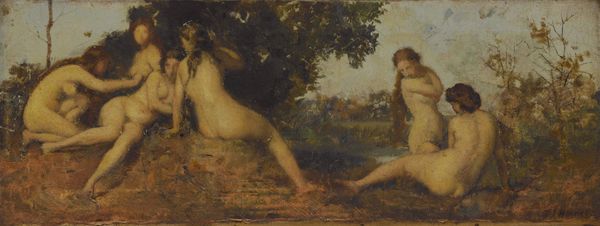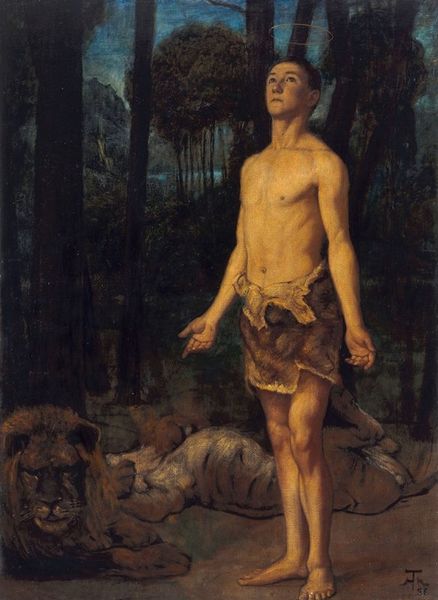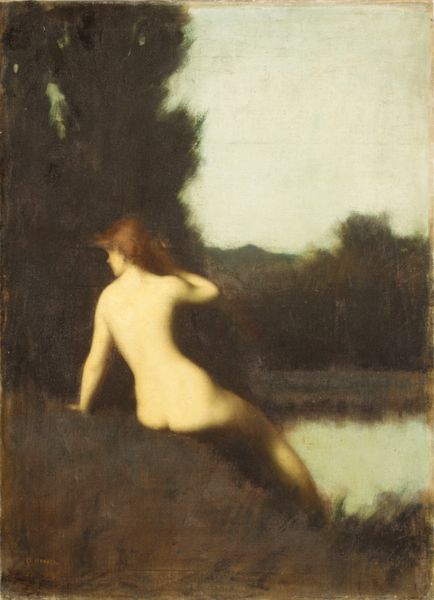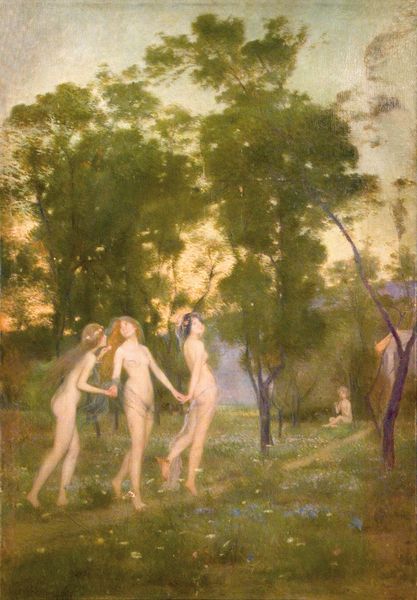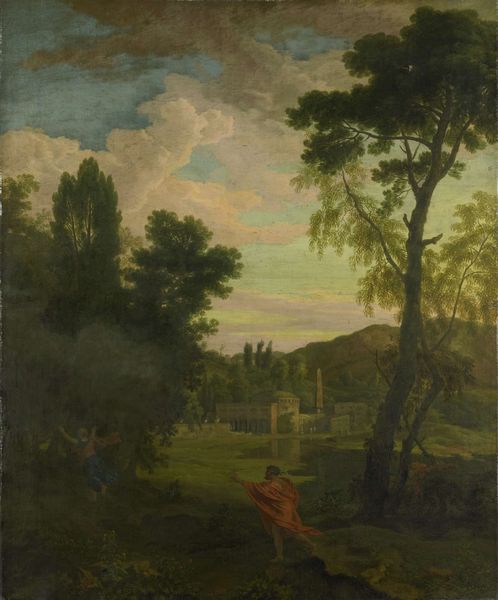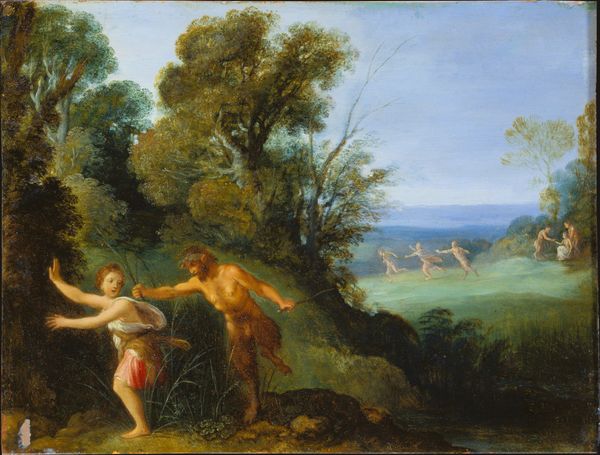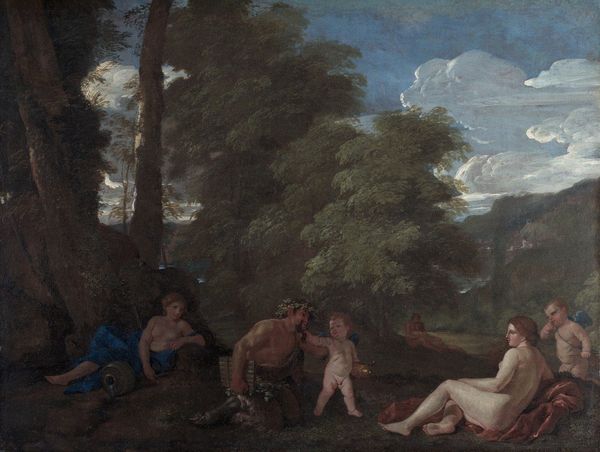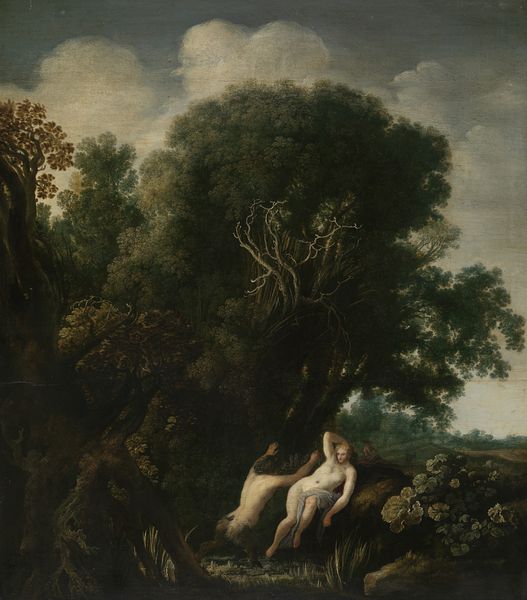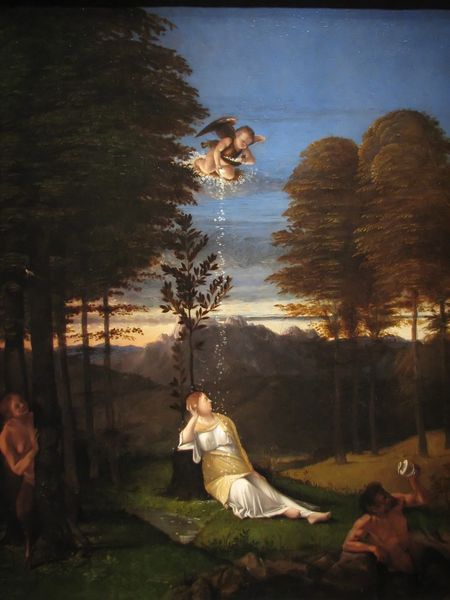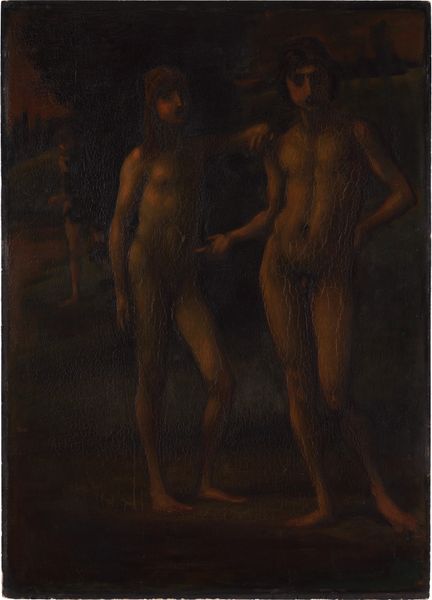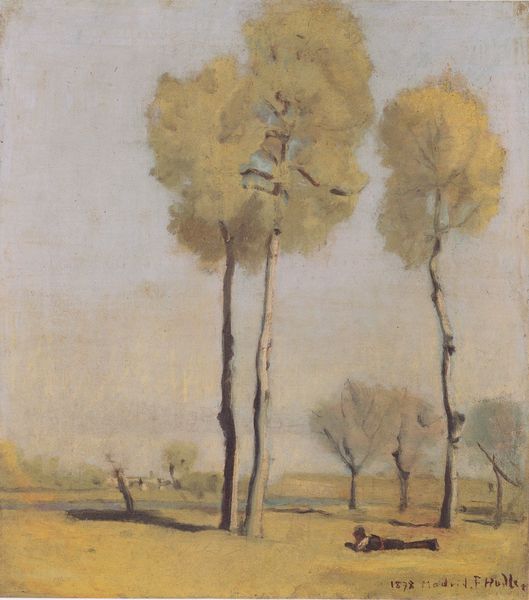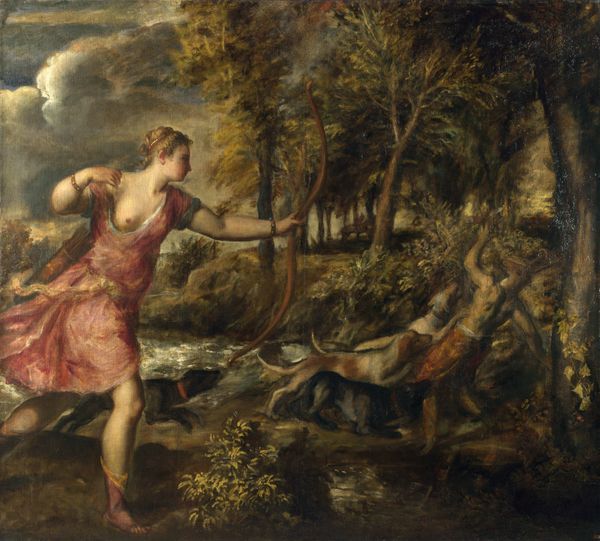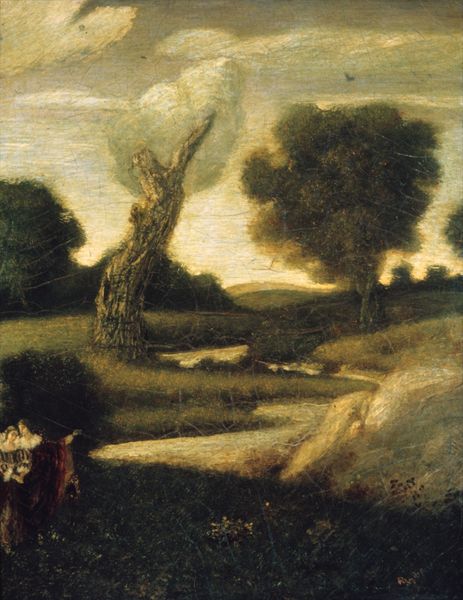
Dimensions: 101 × 73.5 cm (39 3/4 × 28 7/8 in.)
Copyright: Public Domain
Editor: This is "Apollo and Marsyas" by Hans Thoma, created in 1888. It’s an oil painting. It evokes a sense of foreboding… the trees are so tall, and the figures so still. What do you see in this piece? Curator: I see a landscape steeped in cultural memory. Thoma invokes a very specific narrative—the tragic competition between Apollo, god of music, and Marsyas, a satyr, who dared to challenge him. Do you recognize the significance of their attributes? Editor: Is that a flute Marsyas is holding, and Apollo is holding what looks like a… bow? I wouldn't think of Apollo having a bow! Curator: Precisely. The lyre, Apollo's usual instrument, is absent. The bow is not his dominant symbol, and yet here it replaces the lyre. What psychological weight does that carry for you? Editor: Hmm. Maybe that Apollo isn't relying on his usual artistic strengths. He's entering into Marsyas' domain almost... armed? Curator: You intuit the dynamic perfectly! Thoma is using familiar imagery, the nude figures and verdant landscape typical of Romanticism, but twisting the symbols to reveal something deeper. The trees themselves—do they remind you of anything? Editor: They seem like pillars... classical architecture? Almost like we’re looking at a stage setting? Curator: A stage for tragedy, perhaps? These are more specifically cypress trees, long associated with mourning and the underworld, prefiguring Marsyas’s grim fate. The entire canvas breathes an awareness of inevitability. Thoma asks us to contemplate not just the myth, but its enduring resonance within our cultural psyche. What do you think about that? Editor: It's unsettling, how Thoma layers familiar images with darker meanings, creating this heavy atmosphere. I see the painting in a completely different light now. Curator: And hopefully recognize the persistence of visual symbols and their power over how we understand narrative.
Comments
No comments
Be the first to comment and join the conversation on the ultimate creative platform.
